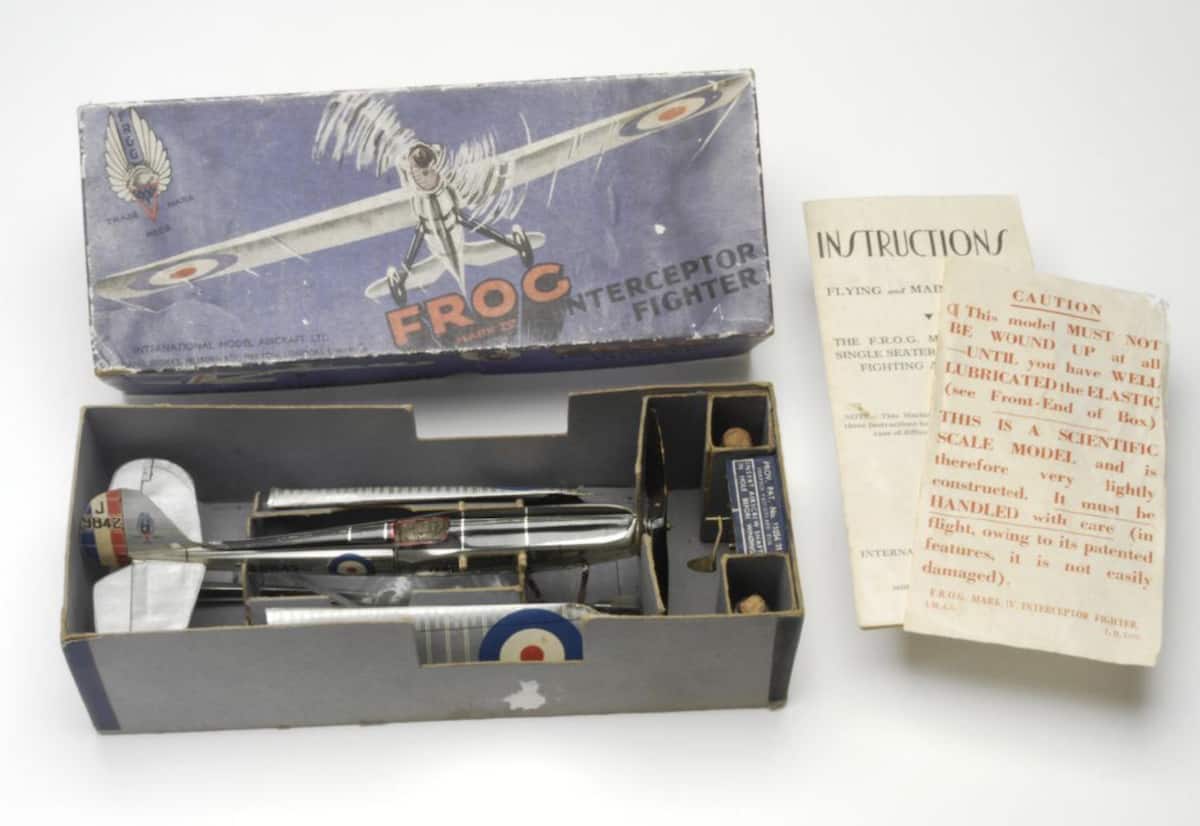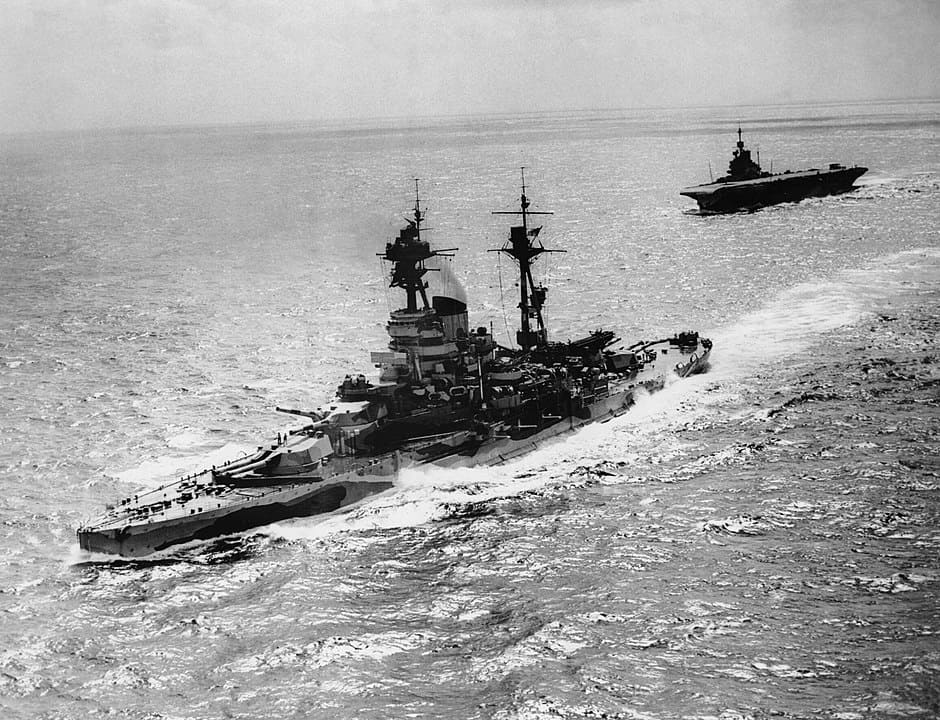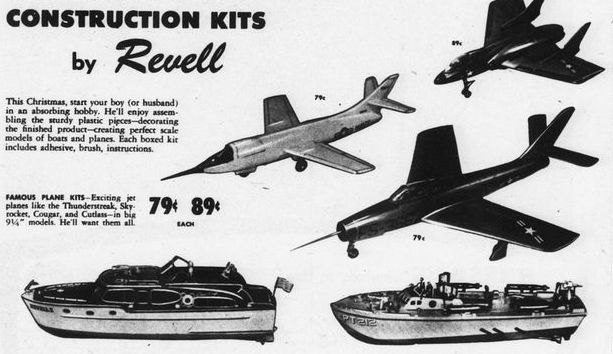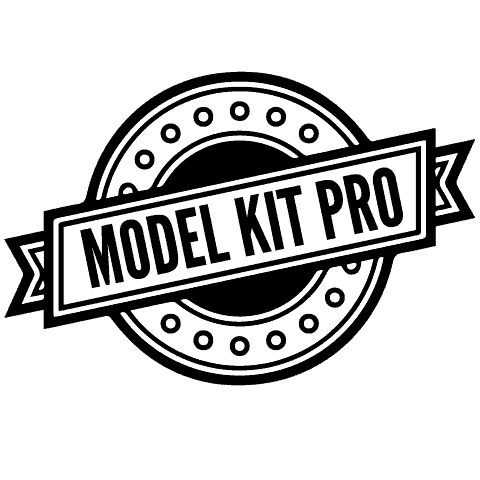Model kits have been around as long as I can remember. Have you ever wondered what were the first ones made and what was the intention of the builders? Who made the first kits and are they still building model kits today?
Plastic modeling began in 1936 in the United Kingdom by a company named Frog. Frog only built airplane model kits called Penguin. Other plastic model kit companies that started in the 1940’s included Renewal, Empire, Hawk, Varney And Linberg. These companies also produced airplane kits.
Frog: The First Model Kit Production Company
Frog’s first model kit was built in 1932 and was called the Interceptor MK4. It was made with an aluminum fuselage, paper wings and a tail in plain silver. In 1936 they began to produce a range of 1/72 plastic model kit airplanes built with cellulose acetate.

In 1936 Frog built and sold a 1/72 aircraft model kit in plastic called the Penguin. The name is derived from the non-flying nature of these models.
The original founders of the company were Charles Wilmot and Joe Mansour. The company called IMA “International Model Aircraft Ltd” used the Frog brand name as it stood for “flies right off the ground”. The Interceptor Mk4 model kit is a rubber band powered airplane.
The company introduced polystyrene model kits in the mid 1950’s which included cars, ships and airplanes in various scale sizes. They produced a lot of lesser known aircraft and model ships that were only for sale by Frog.
The company ended production of model kits in 1976 and many of the Frog model kit molds were sold to a Soviet Union company called Novo.
Model Kits Of The 1940’s

Plastic model kit companies that started in the 1940’s included Renewal, Empire, Hawk, Varney And Linberg. These companies produced airplane kits of all kinds and sizes. Monogram Models introduced its first kits consisting of warships in 1945.
World War II moved modeling into a full-scale industry and hobby for two reasons. The first was that plastics were invented and perfected during the years before and during the war. The availability of plastic made it ideal for mass-produced model kits. The second was that the machines of the war aroused the public’s interest in modeling. Fighters and bombers intrigued many hobbyists who had seen the real aircraft during the war years.
The exploits of navy ships both small and large in the Pacific also fired imaginations. When soldiers and sailors returned home, they had more time and money for recreation, including building models of the machines they knew so well. Monogram Models introduced its first kits of warships in 1945.
Model Kits Of The 1950’s

In 1951, Revell introduced its first all-plastic model kit of an early automobile: a classic 1910 Maxwell, in which the driver was a scaled version of radio comedian Jack Benny. By the mid to late 1950s, more detailed kits and models that could be customized appeared.
Many new companies started production of model kits in the 1950’s such as Aurora, Revell, AMT, and Monogram in America, with Airfix in UK and Heller SA in France. Other new manufacturers in the 50’s included; Matchbox (UK), Italeri, ESCI, (both Italian) Novo, and Fujimi, Nichimo and Bandai (Japan).
American model companies who had been producing assembled promotional scale models of new automobiles each year for car dealerships found a lucrative side business selling the unassembled parts to hobbyists to assemble, thus finding a new income stream for the injection molds which were so expensive to update each year.
These early models were typically lower in detail than what is currently standard. They had non-opening hoods and no engines, and simplified or no details.
In just a short period of time the kit business began to overshadow the production of promos, and the level of accuracy and detail grew into the models we have today.
Model Kits Of The 1960’s

As the industry grew it expanded into many other forms of models. Science fiction, dinosaurs, ancient history, television characters and any thing else the public may have had an interest in. Model spacecraft started to be built in the 1960’s coinciding with the space race.
The 1960’s was a great time for the model kit industry often being referred to as the boom times of model kit making. Improved decals appeared, magazines dedicated to the hobby of model kit building, new lines of gloss and flat paints emerged that were created specifically for the model enthusiast.
International Plastic Modeler Society started in England and soon spread to the United States, Australia, and soon to most of the western world. Magazines and newsletters helped keep people around the world informed of all the changes in the hobby.
The AMT 3 in 1 kits were some of the most popular of the 1960’s. The scale was 1:25 and the detail was typically excellent. The 3 in 1 models included a few extra parts and decals so the cars could be assembled in stock, racing, and custom versions, hence the name. These kits were a great deal at around $1.40.

Model Kits From The 70’s To Today
The model kits of the mid 70’s included cars like the Ford Pinto, The AMC Gremlin, Chevy Vega and many other small engined kits. The first few years of the 70’s was the end of the muscle car era with the addition of smog control and crash bumpers. The late 70’s had a few good models like the Pontiac Trans Am and the Chevy Camaro.
In the 1970’s the model kit manufacturers realized the opportunity of making all the cars, vans and trucks that everyone saw on popular television series each week. The Batmobile, Kitt, Dukes of Hazzard, and many more turned into a great source for models to emulate.
This trend has continued until the present with hundreds of different models to build from all of the old favorite television shows and movies.
Final Thoughts
If you can find a model from the 30’s, 40’s or 50’s you will have quite a piece of model history. They can be found at different model sites that deal in antique model kits but it’s going to cost quite a bit. Wouldn’t it be something to have a kit of the 1936 Frog Penguin in your display case. Happy Modeling!
Related Topics
Is model kit building a good hobby? Scale model building is an excellent outlet for stress by focusing on the steps in the instructions or trying to exercise your creativity with the paint scheme. If you love collecting and building things then model making is definitely the hobby for you.
Here is a list of some of the skills that model making will help you develop:
- Researching
- Planning
- Cutting
- Drilling
- Sculpting
- Sanding
- Gluing
- Painting
- Detailing
- Photography
- Following detailed instructions
Some Of My Favorites

Portable Airbrush paint spray booth for painting your models and parts

Good beginner airbrush kit with mini portable compact compressor

This tool set has all the basics and I like that it comes with a plastic box for storage
(links to Amazon for current prices)
- Sources: Imperial War Museum, https://www.iwm.org.uk/
- Library of Congress, https://blogs.loc.gov/headlinesandheroes/2021/02/the-hobby-boom-of-the-1950s/
- Collecting Muscle Car Model Kits, Tim Boyd, 2017
